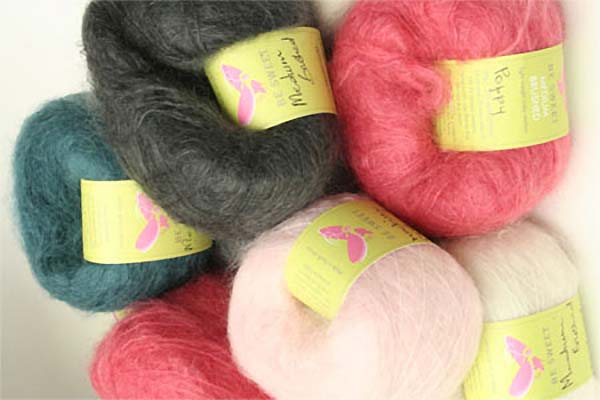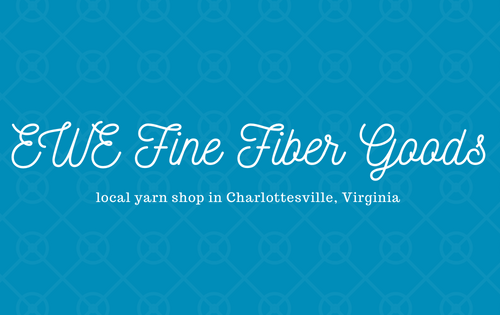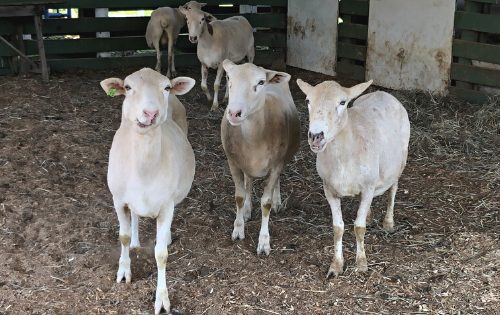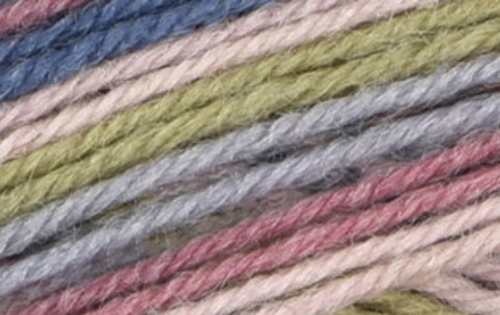A Simple Guide to Animal-Sourced Yarns
Animal-sourced yarns are so ubiquitous that in many places, wool and yarn are interchangeable terms. Sheep’s wool is the gold standard when it comes to fibers, but the wool of many other animals — and their byproducts — can also be used to spin yarn.
Most of these fibers are humanely obtained, with the exception of silk and perhaps angora, which is sometimes plucked rather than shorn. Please note that if you are knitting or crocheting a gift, none of these fibers would be considered vegan as all are animal-derived.
See also: Plant-Based Yarns
Alpaca
Alpaca wool is spun from the fibers of the coat of the alpaca, a camelid mammal similar to a llama. The resulting yarn is hypoallergenic, warmer than sheep’s wool, and very soft. Above all, it is strong! It’s considered the most durable animal-sourced fiber and is well suited for knits that will be worn or used often.
Angora
Angora wool is spun from the fibers of the coat of the angora rabbit. Yarn spun from angora rabbit fiber is extremely fluffy and highly breathable, but it also felts extremely easily, such as with wear and humidity. It is typically blended with other fibers to increase the softness and to reduce the overall cost.
Bison
Bison wool is spun from the fibers of the coat of the bison, also called the American Buffalo. Bison wool is soft, warm, and wicks away moisture well. Each spring, it sheds its undercoat by rubbing against brush. The undercoat is left there and is collected to be spun into yarn.
Camel Hair
Camel hair/camel fur is spun from the fibers of the coat of the camel. It is a soft, strong fiber and is most often found in its natural golden color.
Cashmere
Cashmere wool is spun from the fibers of the coat of the cashmere goat or pashmina goat. Cashmere wool is fine, warm, and has excellent drape.
Chiengora
“Chiengora” is a portmanteau of chien (French for “dog”) and angora. That’s right… it’s dog hair!
The characteristics of the yarn varies greatly based on the breed, but most are warm. And don’t worry — if it’s processed properly, the fiber shouldn’t have any odor, even when wet.
Cow’s Milk
While it isn’t made of fur or hair, casein fiber definitely belongs with the animal-sourced yarns. Using casein (milk proteins) to make yarn is a relatively new endeavor. The process is more like making cheese and involves isolating casein in powder form, immersing it in alkali, and forming it by forcing it through spinnerets. The milk used is from dairy waste and would not otherwise be used for food.
The resulting casein yarn is permeable, soft, and antibacterial. With regard to drape, it behaves similarly to cotton and can also easily mildew. It has a beautiful sheen.
Guanaco
Another camelid with lovely wool, the guanaco is an ancestor of the llama that is native to South America. Guanacos were overhunted for their thick, warm wool (and meat) and they now live as a protected species. Yarn spun from their coats is luxurious and typically left its natural reddish-brown color.
Llama
Many of its relatives are on this list and the llama produces beautiful, soft fibers in its coat, too! This high-wicking fiber is naturally resistant to burning, staining, and UV light, making it perfect for outdoor wear.
Mohair
Mohair is derived from the angora goat (not to be confused with the angora rabbit, the source of angora). It is incredibly soft and has an excellent drape. It also has a large halo, making it perfect for imitating fur trim or as doll’s hair.
Qiviut
Qiviut (kiv-ee-oot) is the down coat of the muskox, which is native to the Arctic and now living in Alaska, Siberia, and Yukon. As you might imagine, the wool of the muskox is extremely warm, but it is also light, hypoallergenic, and odorless.
Sheep
Wool is the quintessential animal-sourced yarn. There are as many varieties of sheep’s wool yarn as there are sheep, but the most commonly found breed is the merino. Soft, elastic, and warm, merino wool easily takes dyes, is hypoallergenic, and is water-repellent due to its natural lanolin content.
Silk
Silk is derived from the silkworm (caterpillar). Cocoons are steamed to kill the pupae inside and the cocoon is dunked in hot water to dissolve the sticky coating. A machine unwinds the strand and twists it with several others to form yarn.
The result is a smooth, shiny yarn that is naturally wrinkle-resistant.
Vicuña
The vicuña inhabits the highest peaks of the Andes Mountains. These lovely camelids only produce small amounts of wool and must be caught before they can be shorn, which adds difficulty and cost to the process. The vicuña can only be shorn every 3 to 4 years!
Vicuña wool is warm and soft. It’s sensitive to chemicals and is usually left in a range of its natural colors, a dark cream to deep red-brown.
Yak
Yak fiber is commonly used in the Himalayas for clothing, tents, ropes, and blankets. It is comparable to cashmere with regard to softness, light and breathable, and strong! It is not prone to pilling or breakage.
Which of these animal-sourced yarns is your favorite?




















One Comment
Pingback: